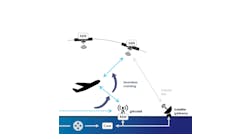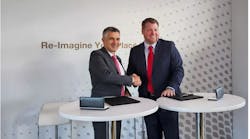Have you ever wondered why getting your message through to others and motivating them into action can be so tough at times? Have you noticed that communicating with your teenagers is vastly different than communicating with your parents? In addition to working with individuals who all have their own behavioral styles, the multi-generational nature of our work force is a force to be reckoned with. Since communication is one of the major contributors to human error on the hangar floor, we need to constantly maintain and develop our communication skills across our work force.
Trying to understand generation-specific frustrations, motives, and values will help us work with, communicate, and share ideas with colleagues from our multi-generation work force. To work together we must understand the following key factors that define a generation:
- Unique work ethics;
- Different perspectives on work;
- Distinct and preferred ways of managing
- Unique ways of viewing quality;
- Different priorities that effect how and when they show up for work.
The remainder of this article discusses the characteristics that describe the different generations. While these may be broad and overgeneralized in some regards, everyone will be able to recognize their friends and teammates who have these characteristics.
In most organizations we may be working and communicating with
- Veteran Generation (veterans), born between 1933 – 1945 (ages 60-72)
- Boomer Generation (boomers), born between 1946 – 1964 (ages 41-59)
- Generation X, (gen X’ers) born between 1965 – 1976 (ages 29-40)
- Millennials Generation Y (gen Y’ers), born between 1977 – 1998 (ages 7-28)
Veterans
Most vesterans employ a “Work First!” attitude. If you are working with a veteran, take the time to get to know their background, experiences, work preferences, and personal needs. In the workplace veterans like to contribute, are loyal, disciplined, and appreciate courtesy. To communicate to them be patient and take the time to explain new ideas; they may be stubborn. Their work must be satisfying, utilizing their skill and expertise. They have a strong work ethic. They like to be asked for advice, then expect you to listen to them. Use the personal touch. Thank them in writing. Veterans want to work in an atmosphere with living, breathing humans, not voice mail or emails. Remember that they did not grow up with computers, video games, fly-by-wire systems, and advanced computer-controlled aircraft systems. They may have adapted to more change in their lives than any currently working generation.
Boomers
The boomers “Live to Work!” In the work force they are driven to compete, seek to improve, and are hard workers. They grew up knowing that to survive they had to work and to work hard. They want to be challenged and valued; they want to be part of success. To communicate with boomers show them respect for their skills, knowledge, and potential. Give them clear goals and guidelines with the freedom and flexibility to do things their way. Give constructive feedback, take an interest in them as a friend. Boomers have embraced the computer revolution, know what the workplace was like before the advent of computers, and probably learned to type on a manual typewriter. On the shop floor, they probably learned to do tasks without the aid of computer diagnostics and now have had to learn how to use computers.
Generation X
The Gen X’ers “Work to Live!” In the workplace they are independent, diverse, flexible, outcome oriented, and focus on having a life — today. When opportunities for growth, mobility, challenge, and responsibility dry up so does their motivation. Give them clearly defined goals and the freedom to achieve them in their own way. To get through to them, show that you trust them, have confidence in them by allowing them to do the job on their own and recognize their development. Respect their time and be straightforward. Reward with training and increased responsibility. They expect a lot of feedback from managers. In the workplace, threatening them to do something does not work. They did not grow up with the survival instinct that the boomers did. They have grown up with computers, cell phones, and email. They view computers as an integral part of the work environment and embrace technology. They may not have learned how to do some tasks without a computer since computers have always been part of their work environment. Their motivation is to have fun at work, make money, and have a life.
Generation Y
The Millennial Generation Y “Live, then Work!” In the workplace they are informal, digital savvy, multi-taskers, teamwork oriented, enjoy group endeavors, well-educated, and like freedom and flexible work schedules. Very demanding, they want a wide range of projects to work on as well as challenging and meaningful work. They need structure, supervision, and look for immediate gratification and feedback.
Gen Y’ers claim that the relationship they have with their immediate boss is a critical factor in whether they stay on or leave a job. The best managers create an environment where people “want to come to work.” They need to be entertained and enlightened. They have grown up with laptop computers, text messaging, and video games. They may not have ever seen a typewriter. They had classes in school on using PowerPoint for effective presentations. They are completely at home with fly-by-wire, advanced computer diagnostics, and expect even more through the use of computer technology in the workplace. To communicate with a gen Y’er, we need to be clear in our requirements for a task, give answers to all of their questions, and be patient. They like opportunities to learn and develop new skills.
All generations want:
- Work that provides personal satisfaction
- Employers who understand personal lives are important
- Work that is valued by employers and customers
- Clear sense of purpose from employers
Benefits of multi-generation work teams include:
1. The team can attract and retain talented people of all ages with different strengths.
2. The team is more flexible.
3. The team can gain and keep greater market share because its members reflect a multi-generation market.
4. Decisions are stronger because they’re broad-based.
5. The team is more innovative.
6. The team can meet the needs of a diverse public.
Companies are tapping into the positive potential of their generational diverse workforces. They are harnessing the power of diverse viewpoints, passions, and inspirations. When a team includes people from various generations, and all of their perspectives are utilized, the team is more effective.
Differences become productive when we appreciate them and utilize them. The diversity of the work force in a company challenges how the company thinks, what they do, and their ability to achieve exceptional performance. Each generation has its strengths in understanding sheet metal and composite design, electronic controls, and repair. Where a diverse work force has developed appreciation for differences and learned to bridge the gaps, everyone wins. Learn to communicate across these generations in your work teams and you too will win.




